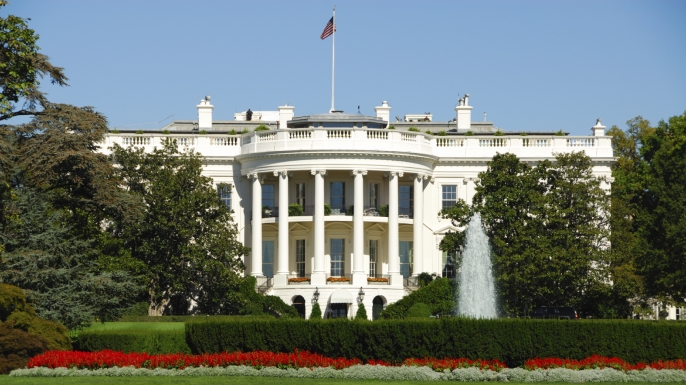In 1912 the pioneering French sociologist Emile Durkheim (1858-1917) published The Elementary Forms of Religious Life, which presented his findings (not without controversy) on primitive clan-based religious culture. Durkheim sought to identify the nature of religion by studying it in what he took to be its pristine form. In the course of his work, he realized that modern secular societies had many important similarities to the societies he was observing. For Durkheim, religion satisfied a need for social solidarity and identification that would also require satisfaction in a secular scientific epoch. His observations are pertinent to the proposition that religion and purportedly secular ideologies like nationalism, rather than being opposites, are actually two members of the same family. One implication of this insight is that the West’s proud determination to separate church and state has overlooked the dangers of joining ostensibly nonreligious worldviews to the state.
The parallels between modern Western societies and the Australian and North American aboriginal societies that Durkheim studied reach to things like public feasts, rituals, sacred objects (totems), and holidays (i.e., holy days). Durkheim thought the similarities stem from the very nature of social living (as least as most people have conceived it). He wrote:
In a general way, it is unquestionable that a society has all that is necessary to arouse the sensation of the divine in minds, merely by the power that it has over them; for to its members it is what a god is to his worshippers. In fact, a god is, first of all, a being whom men think of as superior to themselves, and upon whom they feel that they depend. Whether it be a conscious personality, such as Zeus or Jahveh, or merely abstract forces such as those in play in totemism, the worshipper, in the one case as in the other, believes himself held to certain manners of acting which are imposed upon him by the nature of the sacred principle with which he feels that he is in communion. Now society also gives us the sensation of a perpetual dependence….
[I]t imperiously demands our aid. It requires that, forgetful of our own interests, we make ourselves its servitors, and it submits us to every sort of inconvenience, privation and sacrifice, without which social life would be impossible. It is because of this that at every instant we are obliged to submit ourselves to rules of conduct and of thought which we have neither made nor desired, and which are sometimes even contrary our most fundamental inclinations and instincts….
[T]he empire which it holds over consciences is due much less to the physical supremacy of which it has the privilege than to the moral authority with which it is invested. If we yield to its orders, it is not merely because it is strong enough to triumph over our resistance; it is primarily because it is the object of a venerable respect.
Durkheim went on to observe, eerily, something not entirely strange to American society:
[W]e see society constantly creating sacred things out of ordinary ones. If it happens to fall in love with a man and if it thinks it has found in him the principal aspirations that move it, as well as the means of satisfying them, this man will be raised above the others and, as it were, deified. Opinion will invest him with a majesty exactly analogous to that protecting the gods. This is what has happened to so many sovereigns in whom their age had faith: if they were not made gods, they were at least regarded as direct representatives of the deity…. The simple deference inspired by men invested with high social functions is not different in nature from religious respect.
Also, “we have seen society and its essential ideas become, directly and with no transfiguration of any sort, the object of a veritable cult.”
Durkheim explained that in religious and nonreligious societies alike, venerable respect is projected onto objects, turning something abstract and elusive into something tangible and observable. The object “thus becomes sacred.” He noted that “the cause whose action we observe here is not peculiar to totemism; there is no society where it is not active” (emphasis added).
Many objects have been turned into totems, but among the most common are flags, which are emblems signifying an association with a group and a cause taken to be larger than any individual. (In America, other totems include the Constitution, which presidents pledge to “preserve, protect, and defend,” and the military uniform.) There’s hardly a need to point out how the flag is venerated in the United States — especially these days. People routinely pledge allegiance to it. They are willing to die for it, and they express reverence for those who “defend” it. True, the mere “piece of cloth” is a symbol of something, but as Durkheim wrote, “The soldier who dies for his flag, dies for his country; but as a matter of fact, in his own consciousness, it is the flag that has the first place…. He loses sight of the fact that the flag is only a sign, and that it has no value in itself, but only brings to mind the reality that it represents; it is treated as if it were this reality itself.”
In the United States, at least, it would be hard to distinguish the flag from the sacred objects of any traditional religion. Yes, the flag is a symbol, but of what? It symbolizes more than the country’s institutions, history, population, or land. “Venerable respect” extends to something regarded as transcendent and quasi-mystical: the Nation, whose corporeal representative is the government. What else explains why flag-burning as political protest — even if the flag is the protester’s property — incites such wrath? Perhaps a flag, because of what it symbolizes, cannot really be private property — even if you just bought it at Walmart. While we’re fortunate the Supreme Court has ruled that flag-burning is protected expression under the First Amendment, let’s not forget that Donald Trump called for imprisonment and loss of citizenship for flag-burners. A constitutional amendment to prohibit flag desecration would likely have significant if not majority public support today, although in the recent past such an amendment could not get through the Senate after passing the House.
Anyone doubting the totemic nature of the American flag need only consult 4 U.S. Code, Chapter 1 of the flag code, where we find this in section 8:
No disrespect should be shown to the flag of the United States of America; the flag should not be dipped to any person or thing. Regimental colors, State flags, and organization or institutional flags are to be dipped as a mark of honor.
(a) The flag should never be displayed with the union down, except as a signal of dire distress in instances of extreme danger to life or property.
(b) The flag should never touch anything beneath it, such as the ground, the floor, water, or merchandise.
(c) The flag should never be carried flat or horizontally, but always aloft and free.
(d) The flag should never be used as wearing apparel, bedding, or drapery. It should never be festooned, drawn back, nor up, in folds, but always allowed to fall free. Bunting of blue, white, and red, always arranged with the blue above, the white in the middle, and the red below, should be used for covering a speaker’s desk, draping the front of the platform, and for decoration in general.
(e) The flag should never be fastened, displayed, used, or stored in such a manner as to permit it to be easily torn, soiled, or damaged in any way.
(f) The flag should never be used as a covering for a ceiling.
(g) The flag should never have placed upon it, nor on any part of it, nor attached to it any mark, insignia, letter, word, figure, design, picture, or drawing of any nature.
(h) The flag should never be used as a receptacle for receiving, holding, carrying, or delivering anything.
(i) The flag should never be used for advertising purposes in any manner whatsoever. It should not be embroidered on such articles as cushions or handkerchiefs and the like, printed or otherwise impressed on paper napkins or boxes or anything that is designed for temporary use and discard. Advertising signs should not be fastened to a staff or halyard from which the flag is flown.
(j) No part of the flag should ever be used as a costume or athletic uniform. However, a flag patch may be affixed to the uniform of military personnel, firemen, policemen, and members of patriotic organizations. The flag represents a living country and is itself considered a living thing. Therefore, the lapel flag pin being a replica, should be worn on the left lapel near the heart. [Emphasis added.]
(k) The flag, when it is in such condition that it is no longer a fitting emblem for display, should be destroyed in a dignified way, preferably by burning.
Then there’s this in section 9:
During the ceremony of hoisting or lowering the flag or when the flag is passing in a parade or in review, all persons present in uniform should render the military salute. Members of the Armed Forces and veterans who are present but not in uniform may render the military salute. All other persons present should face the flag and stand at attention with their right hand over the heart, or if applicable, remove their headdress with their right hand and hold it at the left shoulder, the hand being over the heart. Citizens of other countries [!] present should stand at attention. All such conduct toward the flag in a moving column should be rendered at the moment the flag passes. [Emphasis added.]
Apparently, the drafters tried to anticipate every situation. We find, for example, in section 7:
The flag of the United States of America, when it is displayed with another flag against a wall from crossed staffs, should be on the right, the flag’s own right, and its staff should be in front of the staff of the other flag. [Emphasis added.]
The code states that this “codification of existing rules and customs pertaining to the display and use of the flag of the United States of America is established for the use of such civilians or civilian groups or organizations as may not be required to conform with regulations promulgated by one or more executive departments of the Government of the United States.” In other words, these rules are not just for government employees.
Incidentally, section 10 states, “Any rule or custom pertaining to the display of the flag of the United States of America, set forth herein, may be altered, modified, or repealed, or additional rules with respect thereto may be prescribed, by the Commander in Chief of the Armed Forces of the United States, whenever he deems it to be appropriate or desirable; and any such alteration or additional rule shall be set forth in a proclamation.” (Emphasis added.)
Remarkably, this power is given to the president not as the civilian ruler, but as head of the military.
Violating these rules apparently carries no penalty. Nevertheless, how can we explain this bizarre code without using terms usually found in a religious context? We can explain it by saying that nationalism is a religion, or that nationalism and religion are both members of a wider family and thus have important features in common. The government is analogous to the church, the nation-state to the deity, and the president to something like the supreme head of the Church of England.
In The Myth of Religious Violence, William Cavanaugh writes:
If it is true … that nationalism exhibits many of the characteristics of religion — including, most important for our purposes, the ability to organize killing energies — then what we have is not a separation of religion from politics but rather the substitution of the religion of the state for the religion of the church.
Perhaps we should read the First Amendment’s Establishment Clause — “Congress shall make no law respecting an establishment of religion” — not as a mandated separation of religion and state but as a non-compete clause.
































